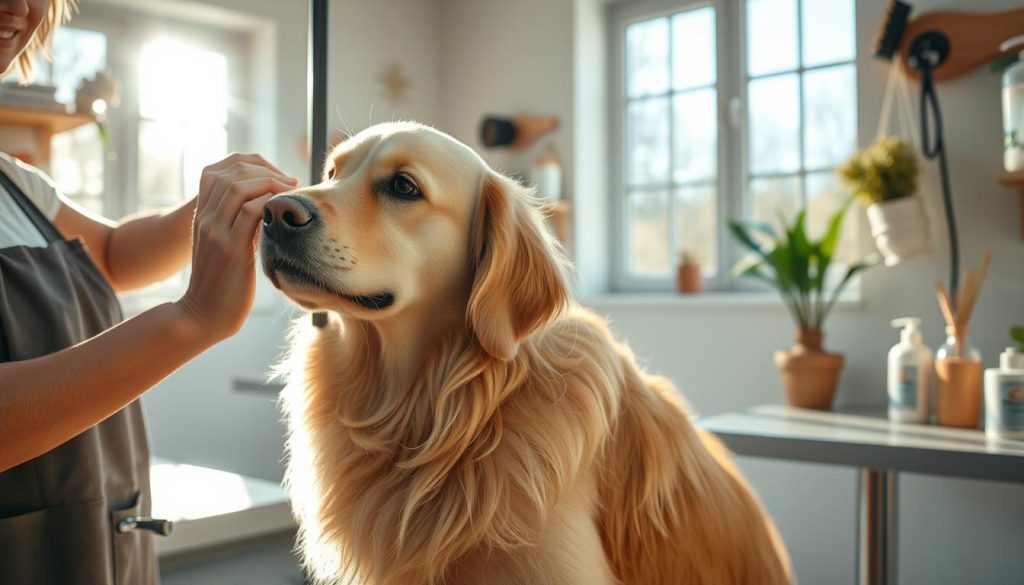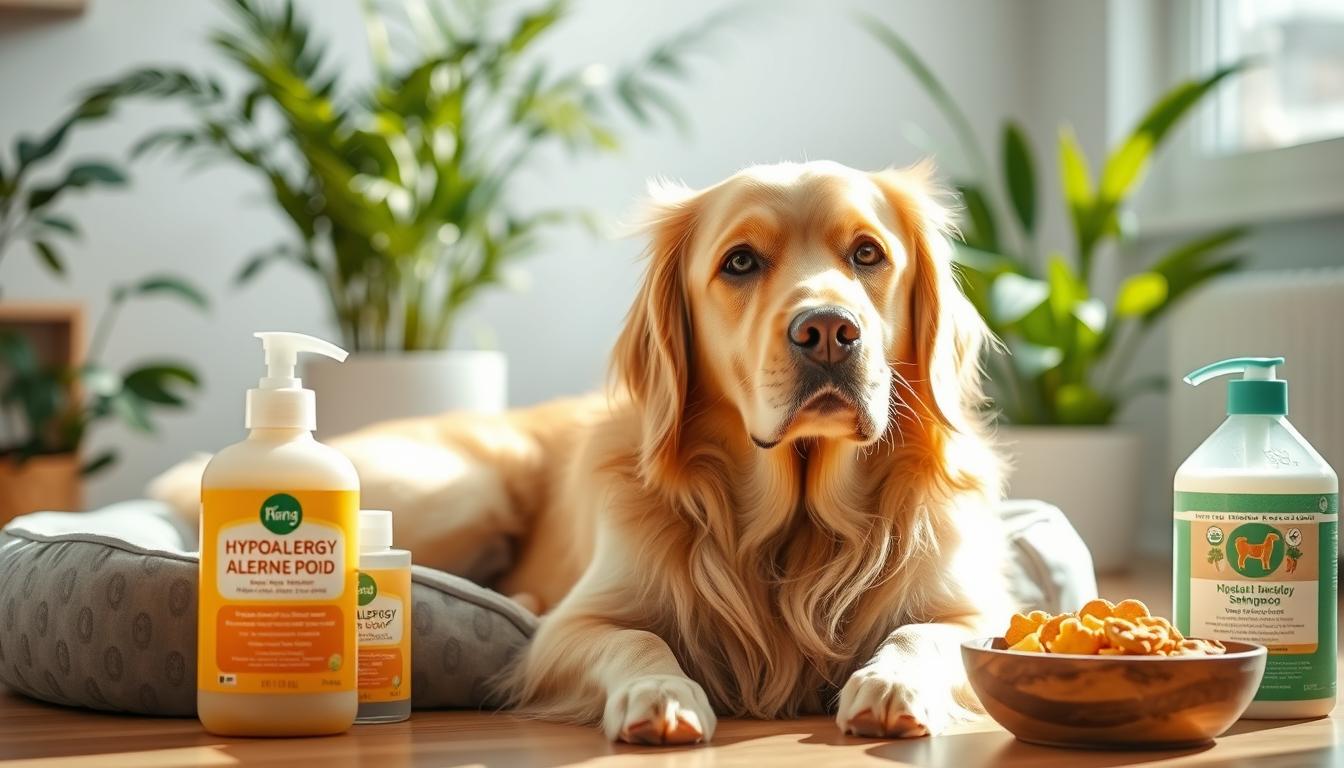As a dog owner, I know how tough it is to manage my dog’s allergies. Dog allergies can be really hard to deal with. But, with the right steps, we can make our dogs’ lives better. In this article, I’ll share tips to help other pet owners with dog allergies.
Dog allergies can come from many things like the environment, food, and grooming products. Knowing what can make our dogs sick helps us protect them. I’ll show you how to spot allergy signs and make a safe home for your pet.
Looking after a dog with allergies needs a lot of effort. We’ll talk about grooming, food, and when to see a vet. By following these tips, we can give our dogs the care they need and help them feel better.
Understanding Dog Allergies: Causes and Symptoms
As a pet parent, knowing about dog allergies is key. It helps you spot signs in your furry friend. Dog allergies can make them very uncomfortable and hard to manage.
Common Allergens for Dogs
Dog allergies can come from many things in their environment. These include:
- Pollen from trees, grasses, and weeds
- Dust mites
- Certain foods, such as beef, dairy, or wheat
- Flea saliva
- Grooming products or household cleaners
How to Recognize Allergy Signs in Your Furry Friend
Spotting allergy symptoms in dogs is the first step to help them. Common signs are:
- Excessive itching, licking, or scratching
- Skin irritation, redness, or hot spots
- Respiratory distress, such as sneezing or wheezing
- Gastrointestinal issues, like vomiting or diarrhea
- Paw chewing or licking
If you see these signs in your dog, see a vet. They can figure out what’s wrong and help your dog feel better. With the right care, your dog can live a happy, healthy life.

Creating a Pet-Friendly Environment
As a pet owner, making your home safe and welcoming for pets is key. It’s good for your pet and your health. A few simple steps can help reduce allergens and improve air quality, making your home a cozy place for everyone.
Start by choosing easy-to-clean surfaces and materials. Hard floors like hardwood or tile are better than carpets, which hold pet dander and hair. Also, pick furniture and fabrics that are easy to clean and vacuum, reducing allergens.
- Invest in washable pet beds and covers to keep your furry companion’s sleeping areas clean and allergen-free.
- Use HEPA air purifiers to effectively filter the air and remove pet dander, dust, and other airborne irritants.
- Regularly vacuum and clean your home, paying special attention to areas where your pet spends the most time.
Improving indoor air quality is also vital. Use air purifiers and open windows to let in fresh air. Natural air fresheners like essential oils or beeswax candles can also help keep the air clean and pleasant.

By following these tips, you can make your home a safe and healthy space for you and your pet. A clean home not only improves air quality but also lowers the chance of allergies and breathing problems related to pets.
Grooming Routines for Allergy Management
Keeping up with a regular dog grooming routine is key for managing pet allergies. Bathing and brushing your dog are simple steps that can greatly reduce allergens. These steps help cut down on dander, pollen, and other allergens that can cause reactions.
Bathing and Brushing Guidelines
Bathing your dog weekly or bi-weekly helps remove allergens from their coat and skin. Use a gentle, hypoallergenic shampoo to avoid irritating their skin. When brushing, focus on areas like the chest, belly, and legs where dander and hair build up.
- Bathe your dog using a gentle, hypoallergenic shampoo at least once a week or every two weeks.
- Brush your dog thoroughly, paying special attention to areas where dander and hair collect, such as the chest, belly, and legs.
- Vacuum and clean your home regularly to remove any pet hair or dander that may have been shed during grooming.
By adding these dog grooming and allergy-friendly grooming steps to your routine, you can manage your pet’s allergens. This makes your home healthier and more comfortable for you and your pet.

Dog Allergy Care: Medication and Treatment Options
Dealing with dog allergies can be tough, but there are ways to help our pets feel better. There are many treatments available, from common medicines to special therapies. These options help manage dog allergies well.
Antihistamines are often the first choice to fight dog allergies. They stop histamine from causing symptoms. Medicines like Benadryl or Zyrtec can quickly ease symptoms. Corticosteroids, such as prednisone or hydrocortisone, also help by reducing swelling. Always talk to your vet about the right amount and how long to take these medicines.
If usual treatments don’t work, there are more advanced options. Immunotherapy, or allergy shots, can make your dog’s immune system less reactive. Special diets and supplements can also help target specific allergens. The most important thing is to work with your vet to create a care plan that works for your dog.

